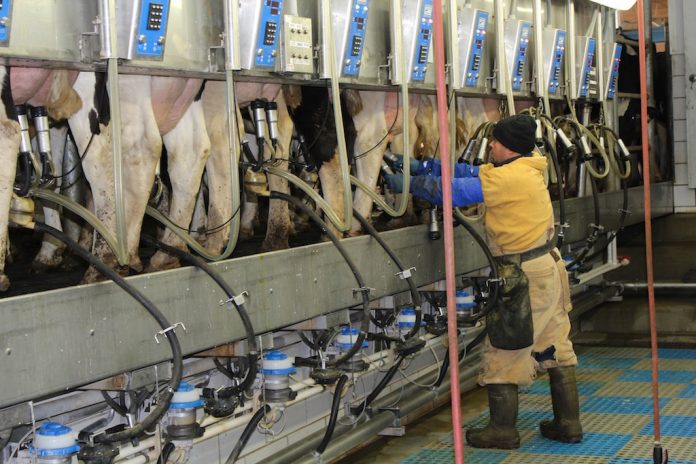Automated milking system adoption continues to grow as labor shortages expand and labor costs increase. The skillset of labor needed for automated systems are often different than that of a conventional milking system.
The greatest factors that currently affect whether an automated system is more profitable than a conventional system are milk production increases and labor savings. Either in a system remodel or new construction, the greatest effect on both of these is facility design.
Averages
In a 42 herd automated system, a study found the average milk production per cow was 85 pounds per head per day, with 2.8 milkings per day. Cows’ desire to be milked throughout the day is not consistent, making it important to plan robot disruptions, such as washing, during slower times for visits to the robot.
One study with wash cycles at 7 a.m. and 3 p.m. showed that the lowest average visit times were about 2 a.m. and 2-3 p.m.
A survey from the University of Wisconsin found robot productivity as measured by production per cow was maximized at 55 cows, with a study range of 53-70 cows per robot. The number of fetch cows increases and robot visits decrease as cows per box increase. The more cows over 60 per robot, the greater the decline in milk production per cow.
Having at least two robots per pen also increases production per robot by allowing at least one robot to continue milking during maintenance and increasing chances of robot access for timid cows. In herds with three or more robots, first lactation heifers can benefit from having their own robot group. The average U.S. dairy herd is made up of 38% first lactation heifers.
This allows for easier adoption to robot entry, different feeding strategies and lighting, and all benefit heifer transition.
Design
Three major considerations during automated system design are traffic system, feeding and footbath placement, all of which greatly affect milk production.
Free-flow systems have been shown to produce more milk per cow, but also have a greater feed allocation at the robot. The free-flow system also showed greater time spent eating the partially mixed ration. The free-flow system does have a greater number of fetch cows.
Another design option known as a hybrid flow system tries to use the best of both worlds by allowing free access to the feed bunk to help maximize intake in high-producing herds. The hybrid system has at least one cross-over that allows cows to go back and forth from feed to free stalls free choice, and the other cross-overs may use one-way gates.
The hybrid system still uses commitment pens, where cows can eat and wait to be milked.
Feeding
Feeding systems have a significant effect on milk production. Studies have compared manual feed push-up to automated feed push-up, and feed bunk usage. One study found that automated system farms that used automated feed push-up systems produced 10 pounds per cow per day. This increase was shown in another study to be from increased feed push-ups per day.
Farms that pushed up feed manually averaged 4.4 feed pushups per day, but when an automated feed push-up system was used, the average feed push-up was 16.8 times per day. The frequency of feed push up showed increased dry matter intake and lying time since cows spent less time searching for feed.
As with conventional systems, feed bunk space and water availability are critical to milk production, with an increase of .7 pounds per cow per day when feed bunk space was increased by 4 inches per cow per day.
Other factors
Water location outside the robot is also critical, with cows consuming 50-60% of their daily water right after milking. Manure handling and footbath system layouts are also critical decisions for automated system facility design.
While alley cleaning systems and frequencies have shown a significant effect on somatic cell and udder hygiene, the type of system, either manual or automated, had little effect on milk production.
Footbath location planning in the initial design is critical for its use. The footbath must be convenient to put out and clean up, and not restrict cow flow too badly. The ideal footbath location is after the robot exit, but not immediately after the robot if possible. There should be an entire cow length between the exit and where the cows enter the footbath.
These are just a few considerations for having a profitable transition to an automated system.













